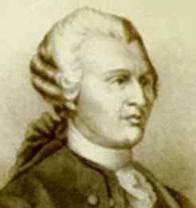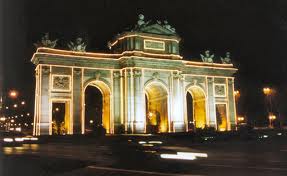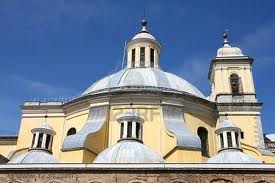Neoclassicism: Francesco Sabatini

One of the most prominent figures in the architectural landscape of Spain in the XVIII century was the Italian Francesco Sabatini, whose indelible print was left in Madrid, most forcefully, through the design and construction of the Puerta de Alcalá, the main gate into the capital of the kingdom.
Born in Palermo, Sicily, in 1722, he grew up during the period of hostilities between the ruling Habsburg and the dissenting Bourbons, who sought incessantly to invade the kingdom and repossess it, until they finally achieved it in 1731. By this time Sabatini was already off to get his eructation in Rome, where he trained as an architect.
His father in law, Luigi Vanvitelli, himself a renowned architect working under the command of the Pope, in Rome, was chosen by the new Bourbon king, Charles VII, for the construction of the Royal Palace of Caserta, roughly some 40 kilometers away from Naples. The project involved an ambitious plan of urbanisation of the area to provide for the court.
Vanvitelli worked continuously on the construction of a governmental centre away from the dangers that might arrive by sea until well after Charles had ceased being Charles VII of Naples to become Charles III of Spain, in 1759. One year later, with the arrival of the new King into his kingdom, Charles endeavored once more to bring his latest possession right up to the standards set by the great metropolises of the world.
In his zest to urbanise Madrid, the king called on Francesco Sabatini, with whom he had had dealings in Naples, primarily through his father in law's intervention. As soon as he arrived, Sabatini was placed at the head of the Royal Palace works, where he was instructed to carry out extensions and build the stables. He also performed works of sanitation of the city.
Puerta de Alcalá

As master builder of the court, Francesco Sabatini's work ranged from adapting the sewage system of the city to modern standards, to building churches and monasteries. Among his most accomplished feats stands out the Convent of St. Pascual in Aranjuez, and, of course, the Puerta de Alcalá.
As a matter of fact, the process to replace the old gate to the city, which Charles had vowed to improve the very first day he crossed it to be crowned as monarch, involved a contest in which Juan de Villanueva also participated with as many as five different alternative. But one gets the impression that Charles was always going to favor his protégé from Naples, and, in fact, the king liked the two models put forward by Francesco Sabatini that he blended the two concepts into one gate.
Other Projects
Following his success with the Puerta de Alcalá, Sabatini was engaged to carry out other similar projects, such as the Royal Gate to the Botanical Gardens, a far more sober structure, also spit into three sections but this time with only three opening, a great central semicircular arch surrounded by simple doorways with lintels on each side and a straightforward, triangular pediment upon two massive columns.

Sabatini also was put in charge of furnishing the city with another great gate, this time right at the other end of the perimeter, close to the river Manzanares, at the bottom of the Cuesta de San Vicente (st. Vincent's Slope), which had been undergoing restoration works for years. This gate, not quite as grand as that of Alcalá, sits squarely in the middle between the restrained style of the gate at the Botanical Gardens and the more bombastic Puerta de Alcalá.
Sabatini's work in the court would continue after the death of his patron, Charles III. He would be involved in further restructurings of the Royal Palace under Charles IV and would participate in the erection of the Royal Basilica of San Francisco el Grande (St. Francis the Great), particularly in the fashioning of its convex facade, its high, semicircular arches, its rectangular windows and its triangular pediment presiding over a row of statues over a balustrade.
Thus, if you ever come to Madrid, you will owe a lot of what you see, and, surely, also a lot of what you like, to the talent of Francesco Sabatini.
